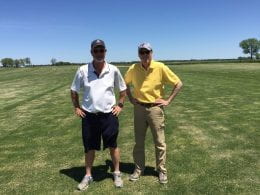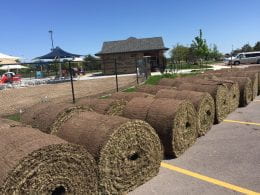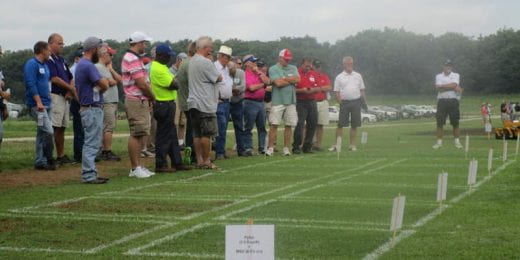By Dr. Jack Fry
Ice can cause many problems for turf, in various forms.
Ice Inside the Plant
Ice routinely forms inside plants when temperatures drop below freezing. Where the ice forms is important – when it’s outside the plant cells, it’s usually not an issue. This is called extracellular freezing. However, no plant cell will survive when ice forms inside it.
The most important part of the turfgrass plant regarding survival is the crown, or growing point. Again, ice forming outside cells inside the crown is common and usually not harmful. It can become an issue, primarily in warm-season grasses, like bermudagrass, when temperatures are very cold for extended periods of time. This forces water inside cells to exit toward the ice (a matter of physics), and too much water leaving the cells will cause dehydration, which can cause the crown to die.

Ice formation inside cells of the crown commonly causes the death of grasses in the northern U.S, and it’s called intracellular freezing or crown hydration injury. Usually, grasses that succumb to this type of injury become well hydrated in early spring, often growing in low areas that don’t drain well. Hydrated crowns that are then subjected to extremely low temperatures often suffer from ice formation inside cells of the crown; when this occurs, they don’t survive. This is common in the northern U.S. on annual bluegrass on golf greens. It could also occur here, but would be most likely on warm-season grasses lying in low areas.
Ice Covering the Plant
Fortunately, in the central U.S., we don’t deal with extended periods of ice cover on turf. Ice cover can result from sleet, freezing rain, or snow melting and refreezing. Turf managers in the northern U.S. begin to worry about ice cover when it remains in place for about 60 days. That’s usually the limit for annual bluegrass – being under ice cover more than that can cause issues with lack of oxygen and/or accumulation of toxic gases under the ice
Ice on the Leaf Surface – Frost!
In a humid environment, when the leaf surfaces cool to temperatures below freezing, ice will form as frost on the leaves. Leaves of cool-season grasses tolerate frost on leaves just fine. Leaves of warm-season grasses don’t like frost, and we often see them go dormant shortly after the first hard frost in the fall.

Frost is primarily a problem for turf managers in spring and fall on cool-season grasses. Foot or vehicle traffic pushes the ice crystals through the leaf surface and punctures cells, causing them to collapse. The result is that there is often brown turf where traffic was present. Honestly, I don’t think we know enough about the physics of ice that comprises frost, and I suspect that frost differs a lot – some ice forming on leaves may be more damaging than other ice.
Following are a few articles related to frost on turf.
For golfers:
https://www.usga.org/content/usga/home-page/articles/2018/01/5-things-to-know–frost-delays.html
For superintendents managing golf courses:
https://www.golfcourseindustry.com/article/golf-frost-delay
Apparently, in Japan, golfers play year-round regardless of temperature. Some courses ignore frost to sustain income and have had less damage than expected:
https://www.blog.asianturfgrass.com/2016/12/how-to-lose-120-million-yen-with-frost-delays.html











